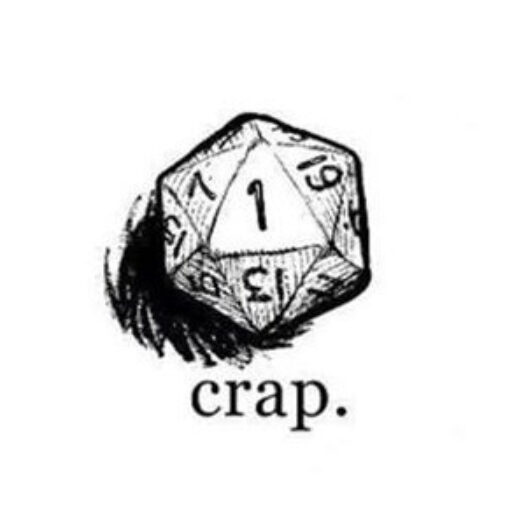The Azlanti began to spread from their island home, colonizing and subjugating many other human tribes, battling with other races and driving them from the land. One colony was was slightly different; Thassilon. Thassilon was founded more than 11,000 years ago by a man named Xin who had been exiled from Azlant for promoting heretical beliefs. He was a follower of the goddess Lissala, a goddess of Runes and he spread her worship amongst the inhabitants of Thassilon to create a utopia paradise, open to all humans, not just the xenophobic Azlanti. He made clever bargains with ancient dragons and mysterious outsiders and the colony flourished in safety. As the empire grew beyond the bounds of Xin’s ability to control, both militarily and administratively, he appointed powerful arcanists as governors to oversee his lands. The mightiest of these were the Runelords. The Azlanti Virtues of Rule (wealth, fertility, honest pride, abundance, eager striving, righteous anger, and well-deserved rest), passed down from the goddess Lissala and First King Xin himself were seen as the benefits of power and expectations of a wise ruler. Each of the runelords was drawn towards one of the seven virtues and excelled in a school of magic associated with one of the Virtues of Rule. (Divination magic, being incredibly commonplace at the time, was not considered a proper school of magic.)
New Stuff: Between XLVI and XLVII
Fort Rannick
According to Lonny… it’s going fairly well. At least as well as can be expected.
.
There’s always a chance Korvosa will actually make a move, which would get bad quickly. But currently, Rannick holds down the northern flank and there isn’t much Korvosa can do about that.
.
The early days of the build up were characterized by light raiding on the southern flank with people taking the chance to settle old scores and grab disputed land. But further north, things have remained peaceful, with neither army too willing to camp near the Shimmerglens or Ashwood.
.
Lonny and the Lord Mayor of Magnimar have been communicating. Haldemeer Grobaras believes that the Korvosan King, Eodred II is trying to bleed Magnimar’s coffers. He told Lonny that he suspects espionage in his palace – that someone sold Korvosa information about the amount of money they had and while Korvosa had the economic upper hand, Eodred decided to send both coffers into a plummet, knowing that Magnimar would hit the ground first.
Korvosa benefits from this by encouraging investment from Cheliax, (to the ire of its merchant class), to which it has been trying to suck up to for years, whereas Magnimar will have to look to “foreign” investors, which Eodred hopes will dilute the political will (held by Magnimar’s merchants) to block Korvosan expansion.
.
That, at least is Haldemeer Grobaras’ assessment, but it could also be a pretense to raise taxes to recoup some of the money lost on having an army stand ready to go to a war nobody wants.
.
Fort Rannick, Turtleback Ferry and Corwin’s Cross are doing very well out of this, since they are housing a great deal of the Magnimarian forces. The army has had to put some basic infrastructure in place, which should help in the long run and the locals are finding their various services in great demand. While the conditions aren’t great and camp discipline sometimes gets lax, the locals who are putting up with it are currently being paid for their services. When Magnimar runs out of money, that’ll likely change and the situation worsen for the townsfolk.
Corwin’s School for Gifted Half-Breeds is doing well, since all the pupils have no shortage of opportunities for work experience. Local craftsmen need all the help they can get to keep up with the army’s demand and it is providing them with on the job training.
.
At the Library of Jorgenfist
Until your discovery of the Thassilonian library, very few in Varisia knew much about Thassilon apart from the fact that the mysterious monuments that dot the land came from that ancient empire, and that the rulers of the land were despots and tyrants of the worst possible order. You have an unprecedented window into the ancient times of Thassilon, and with this window you learn a great deal. Dagfinn summarizes what he learned:
Thassilon
Thassilon was a colony of ancient Azlant. The Azlanti were humans who ruled a vast empire from a landmass now thought to be sunk beneath the waters of the Inner Sea. While other tribes of humans lived savage and feral existences, the Azlanti progressed rapidly in the study of magic, creating a civilization far advanced of any other human society of the time. Even now, rare Azlanti artifacts defy the understanding of Golarion’s finest minds, so complex and advanced are their designs.
When Xin finally died, power was transferred to his son, but by this time the runelords had grown too powerful to accept a new sovereign. Over the course of time, the runelords corrupted the Seven Virtues of Rule into what modern scholars understand to be the “great sins of the soul,” abandoning the positive aspects of each and embracing the negative connotations of each (greed, lust, boastful pride, gluttony, envy, wrath, and sloth) as the rewards of rule.
The seven provinces of Thassilon fell to warring amongst themselves.
Alaznist, Runelord of Wrath
Domain: Bakrakhan
Weapon of Rule: Ranseur of charred adamantine
Belimarius, Runelord of Envy
Domain: Edasseril
Weapon of Rule: Halberd
Karzoug, Runelord of Greed
Domain: Shalast
Weapon of Rule: Burning glaive studded with meteoric gemstones
Krune, Runelord of Sloth
Domain: Haruka
Weapon of Rule: Dragon-tooth longspear
Sorshen, Runelord of Lust
Domain: Eurythnia
Weapon of Rule: Double-headed guisarme
Xanderghul, Runelord of Pride
Domain: Cyrusian
Weapon of Rule: Lucerne hammer
Zutha, Runelord of Gluttony
Domain: Gastash
Weapon of Rule: Scythe
What happened to Thassilon is not clear, except that it and all other Azlanti civilization no longer exists and seems to have come to an end suddenly. Azlanti heritage survives in a dwindling number of Taldan and Chelaxian bloodlines and the god Aroden was known as The Last Azlanti, as he was the last pureblooded Azlanti on Golarion, prior to his ascension to Godhood. What happened to the island of Azlant and the empire of Thassilon remains a mystery, of which the library does not tell.
Karzoug
Karzoug was the Runelord of Greed, who ruled a region called Shalast, part of the ancient empire of Thassilon, thousands of years ago. Karzoug’s armies were composed primarily of powerful stone giants and hordes of hill giants that followed his every command. Karzoug focused his magic on the school of transmutation, magic associated in Thassilonian times with the virtue of wealth. Under his rule, though, it became more associated with the sin of greed. Among the runelords, his mastery of greed magic was uncontested, yet in the schools of illusion and enchantment (related to the sins of pride and lust), his skills had atrophied greatly.
Karzoug warred with his neighbors, but none more so than against Alaznist, the Runelord of Wrath and ruler of Bakrakhan. Between their nations, along a ridge known as the Rasp, Karzoug built immense sentinel statues to watch over Bakrakhan, while Alaznist built towers called Hellfire Flumes to prevent Karzoug’s armies from invading. Citizens of both nations worried that Karzoug’s and Alaznist’s wars would soon escalate to the point where
they could bring about the end of the world.
As Karzoug and Alaznist’s war intensified, and as other wars among other runelords threatened more than just their armies, the runelords devised methods in which they could escape the world, enter a state of suspended animation, or the like, so they could ride out cataclysms. In theory, their surviving minions would then waken them to reclaim their empires once the cataclysms had ended.
.
Xin-Shalast
Xin-Shalast is a legendary lost city, rumored to be hidden somewhere in the Kodar Mountains. None have yet discovered its location, but many have tried.
Xin-Shalast was the capital city of an nation called Shalast, one of seven that comprised the ancient empire of Thassilon. Xin-Shalast was ruled by Runelord Karzoug. Rumor holds he built his palace above all of Golarion so he could look down on his domain as well as see unconquered lands to continually fuel his lust for more. The palace of Xin-Shalast stands upon the mythical mountain called Mhar Massif. This mountain of legendary proportions pierces the skies and lies at the headwaters of the sacred river Alphâwhich Varisian folklore says leads to a earthly paradise sacred to Desna. The River Alph truly exists and runs somewhere through the Kodar Mountains. Anyone who finds it can follow it all the way to Xin-Shalast.
Mhar Massif is said to serve as a bridge to strange realms beyond Golarion. At the foot of the mountain stands the Lower City of Xin-Shalast, where the innumerable servants of the runelord dwelt. From his palace high above, the runelord used unholy ceremonies and incantations to call down unknown beings from the skies.
.
Runeforge
Runeforge was created as a neutral place where agents of the seven runelords could gather to study magic and develop new spells and magic items. The runelords wove wards around Runeforge that barred entrance into the complex to any runelord or his direct agents, in order to keep the research within free from sabotage at the hands of an enemy.
Those who joined Runeforge joined for life. The complex’s constant renewal of air and a magical matrix sustained those within without the need to eat, drink, or even sleep. The final project the runelords set Runeforge on was the development of ways the runelords could escape the imminent fall of their empire. Each faction developed a unique answer for its runelord, based upon the underlying principles of that faction’s magical traditions.
.
Mokmurian’s Notes
From recent notes found tucked into the library tomes, Mokmurian had been interested in Runeforge too. He had copied many of the lines that Dagfinn also found interesting, but also posed questions:
Did the traitor agent know about Runeforge?
Was the traitor agent’s concerns about demilitarizing the border related to Karzoug’s contingency?
Is it really a Hellfire Flume?
Sack Runeforge?
Then the notes end with a conclusion:
Teraktinus to Sandpoint for stone from HF.



